My new video Inspiration and Photo Projects is out! Enjoy!~
When you sit down and look at all the great photo books that are out there, all the photo series based around some spot on and thoughtful insight, it kind of begs the question: Where’d they get the idea? How did they know to photograph this thing? I can get to feeling a little envious sometimes, especially when the idea’s a simple one, because, well, why didn’t I think of that?

Inspiration’s kind of a funny idea. It usually seems to be talked about like it’s this nebulous thing that comes from outside of you, rather than from somewhere within. It’s supposed to be like a bolt of lightning that suddenly gives you clarity about what you’re supposed to do.
But if I’m honest with my experience of it, my relationship with photography inspiration is very rarely a moment of clarity where I’m super in tune with a subject and sure of how to act on it. I don’t suddenly have a vivid sense of - yes, this is how it must look and what it must be.
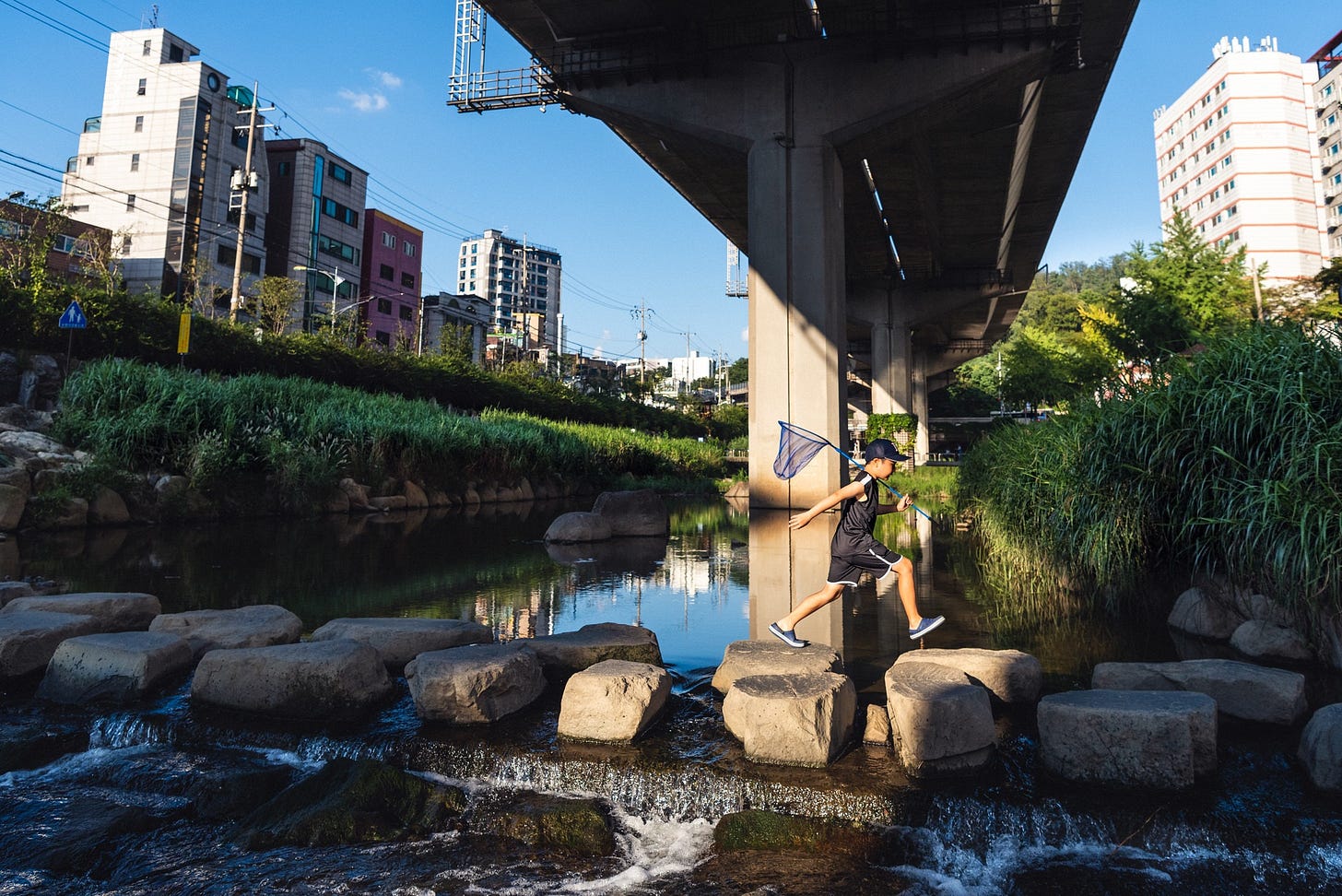
In my experience, inspiration just works a little differently. In this letter I’ll tease out just what I think inspiration is, and hopefully it can help you figuring out that early stage of your own photo project.
So, as I see it, inspiration has a couple of characteristics.
The first characteristic is that inspiration happens kinda slow, at least when you compare it to the ‘bolt of lightning great idea’ which is how I think it’s usually described.

Ideas for creative projects are very rarely conjured fully formed. They’re usually pretty faint and foggy in the beginning. I like to think of this early stage as closer to something like an inclination. What I mean by that is you can feel yourself leaning into or being drawn into the direction of an idea, something that sparks some curiosity in you, but you can’t see the the whole idea fully formed.
And I think because we often expect inspiration to be quick, or abrupt, say, we might actually ignore these inclinations, or at least not take them seriously. But they’re a really important first stage, because it’s from here that inspiration can develop.
When I think about my photo project, Serial Music, I remember hearing years ago about how the photographer Ren Hang did a project where he put out a zine every month for a year. I remember right away being taken with that idea, but it was only after a really long time of working on other projects and focusing on other aspects of the photography process that the zine-a-month idea bubbled up as a plausible way to release Serial Music.
That idea of a monthly release had been sitting in the background for a long time, sort of waiting to suggest itself as a means of presentation, until Serial Music where the time and the project felt right for it.
It’s a pretty well-known sentiment that there are no more original ideas to be had. I think this is attributed to Mark Twain, but so is pretty much everything. Anyway, there’s something a little heavy if you take this sentiment at face value - you’re trying come up with some new idea for a photo project that will be interesting, but what’s the point if it’s all been done already?
But what often gets left out is the second part of this sentiment - that all of these old ideas can be combined and recombined with each other in an infinite variety of ways to make all kinds of new ideas. Inspiration, I think, pulls from many different sources, and that combination of sources is what gives the project its flavor of originality.
For instance, one of my favorite films of all time is called Werkmeister Harmonies. It’s about an innocent young man who bares witness to the destruction of his village when a circus comes to town, bringing with it a deformed, shadowy villain and a dead whale.
There’s a part in the middle of the film where an old man talks about the underlying principles of music, and how modern musical notation is effectively broken, and how it should be reverted to a more primitive form.
I’m not at all a big classical music guy, but I just loved the idea of a these systems at work underneath something like music.
Then around the time I was first lacing together the early seeds for Serial Music, I was listening to a lot of the Canadian hardcore band Fucked Up. They’ve been putting out a series of albums for a number of years now under the theme of the Chinese zodiac.
For me at some point I started to get a sense of overlap between these two fairly different sources, on one side a Hungarian miserablist film and on the other a multi-release punk concept album.
And there’s something in all of this that I think the sentiment about originality leaves out: You can take all these old ideas and recombine them to make something new, but it’s how your personality shines through that can take the idea from something that feels fresh, to something that feels truly unique. You might just be the only one who could ever have made it.
Something that really struck me with this project is how much inspiration happens after you start the work. Once you start on a project there are so many little challenges that come up and that need to be figured out in order to get it all over the finish line. Inspiration expresses itself in how you overcome all these creative challenges.
You can’t really know what these challenges will be until they’re there in front of you, and I think for each new project the challenges will be different. But by being willing to adapt, or willing to introduce new ideas into your project, that are still in the spirit of your original intention, I see something of inspiration in that adaptability.
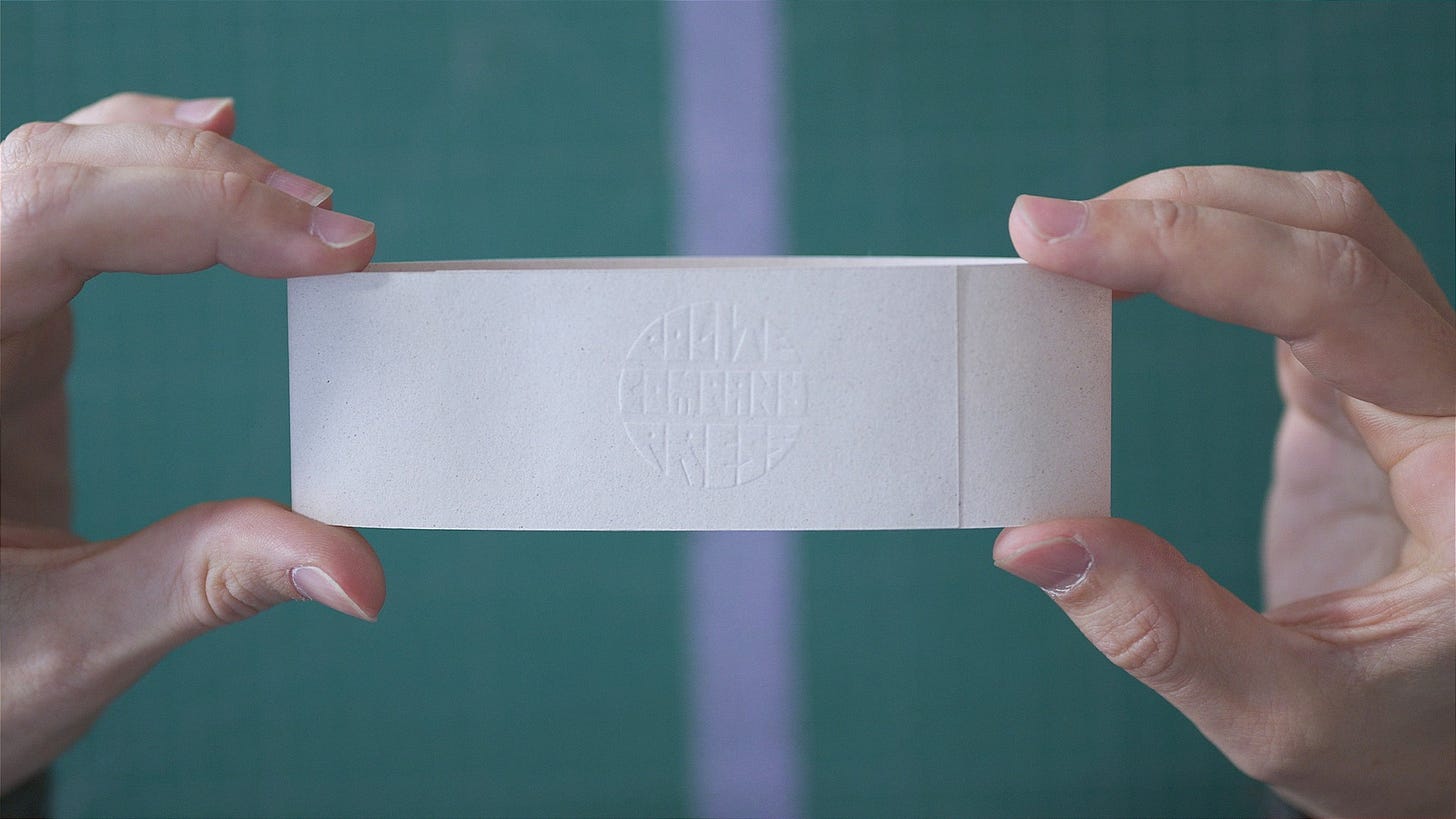
For Serial Music I’d always planned on each zine having 20 image pairs over 40 pages. I worked off of those numbers from the start and did all my designing based on them. But when I submitted them for print I realized that including end pages would go over the page limit for saddle stitching at the spot where they were getting printed. Rookie move for sure.
I didn’t want to delete any images though, so I figured out a way I could still include them. I printed the pairs onto the same 4x6 sheets that have been kind of the backbone of this project, and cut and packaged them in these richly coloured envelopes. That way each person grabbing a zine will get their own mini prints, giving them a sense of how I was engaging with prints for this project all along. And for anyone who grabs more than one issue, they can take all the mini prints and make their own pairs in the same way I made mine.
I had no intention of doing all this at the start of the project. But being forced to work around the surprise limitation showed me a way to improve the project and maintain its original spirit.
These points can make inspiration, or at least my reading of it, seem a little devious. It takes its time, it can’t be found in any one place, and it prefers to show up only after you’re confronted with some kind of creative challenge.
When I think about what I’ve learned from this project and how I want to work with inspiration for the next one, the best way forward seems to be to assume a kind of creative posture - a willingness to respond to what you see and hear with an open mind and a sense of optimism.
Every day, every new meeting and experience is a chance to discover some little piece that’ll fit into the puzzle of whatever project you’re working on now, or working on next. Going into them all with a readiness that, hey, maybe there’s some cool idea to be had here, it can just make the figuring out stage of your project a much lighter thing.
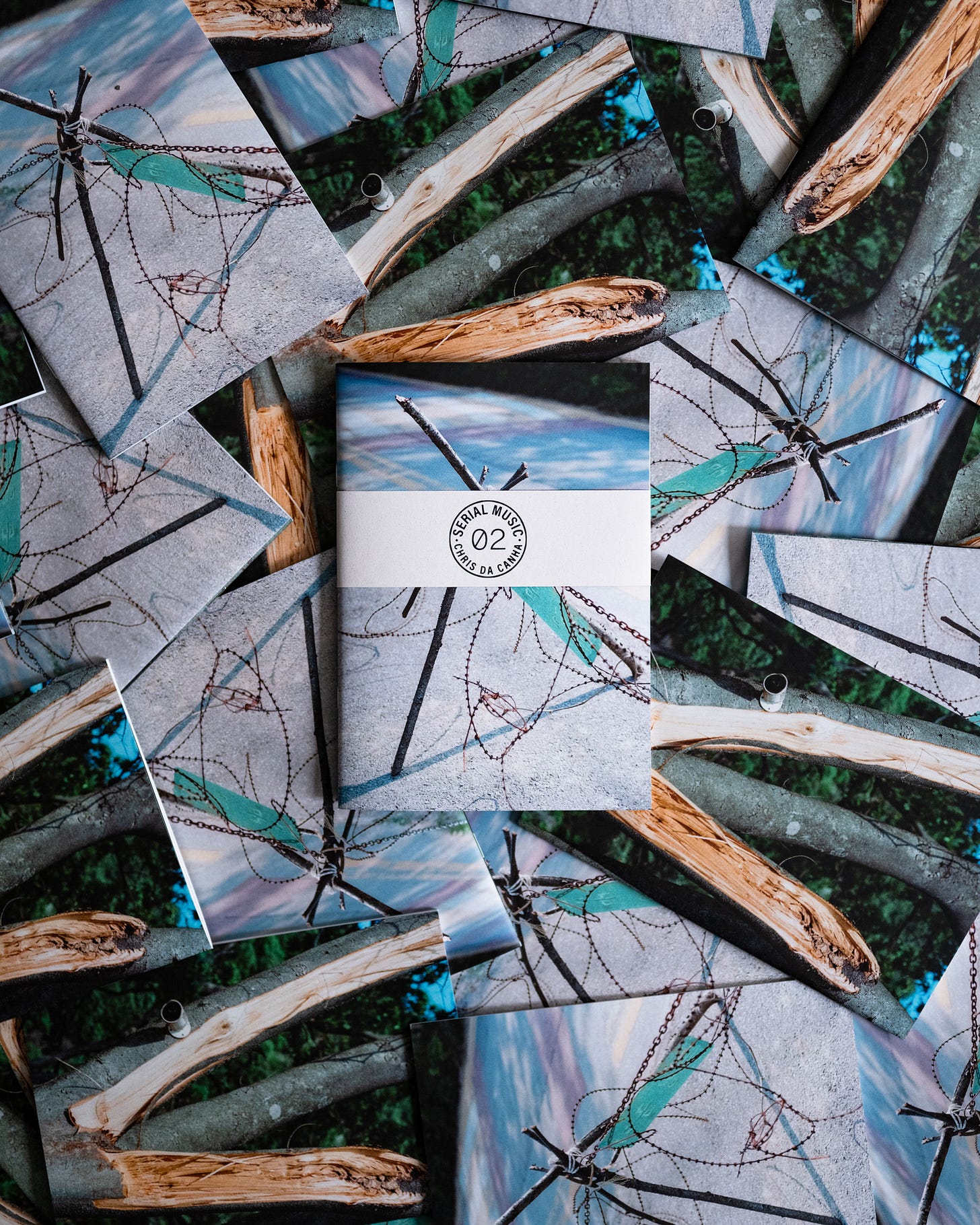
Hop on the video, I’m sure you’ll be into it.
Cheers,
Chris
✌️




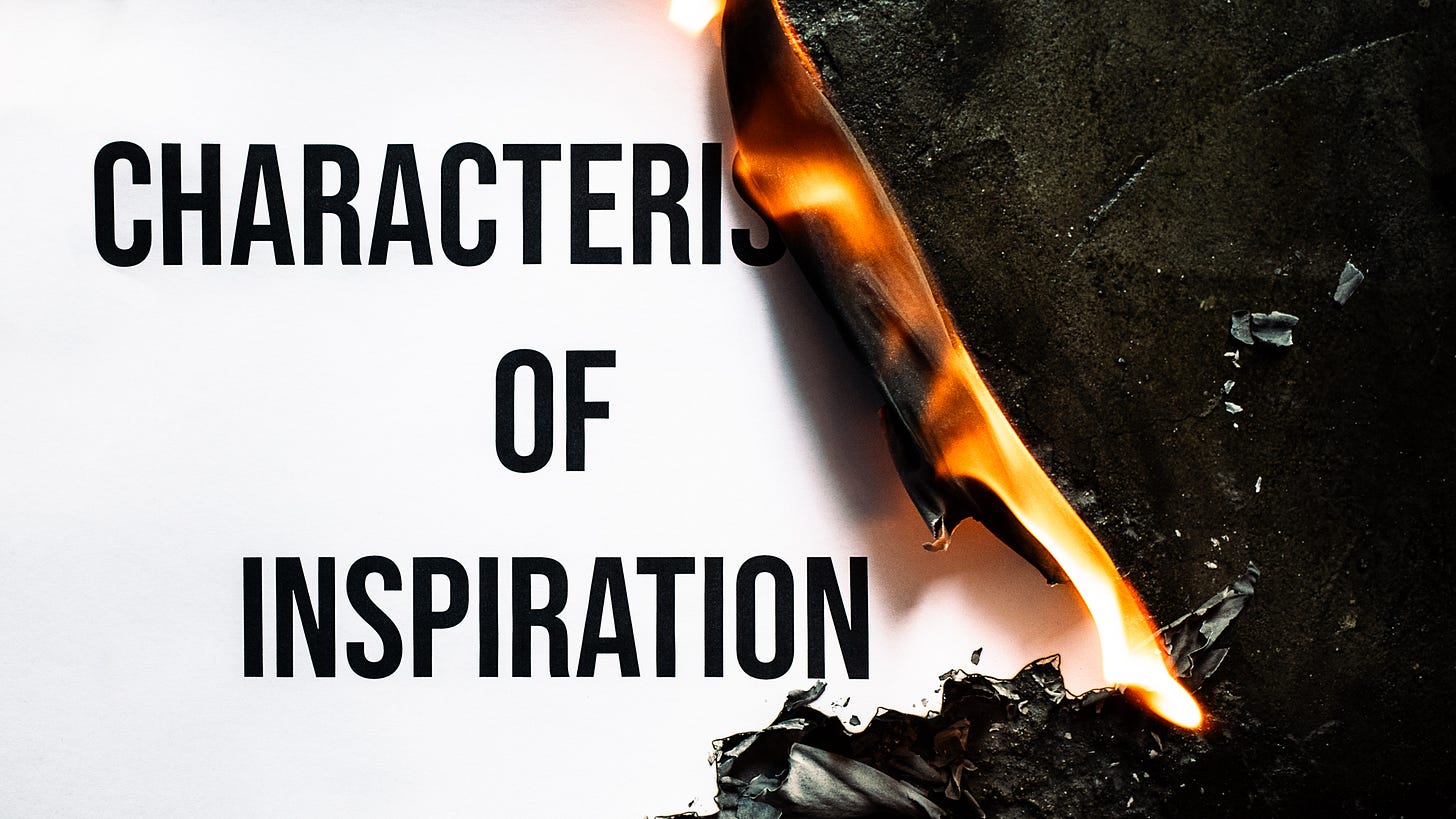
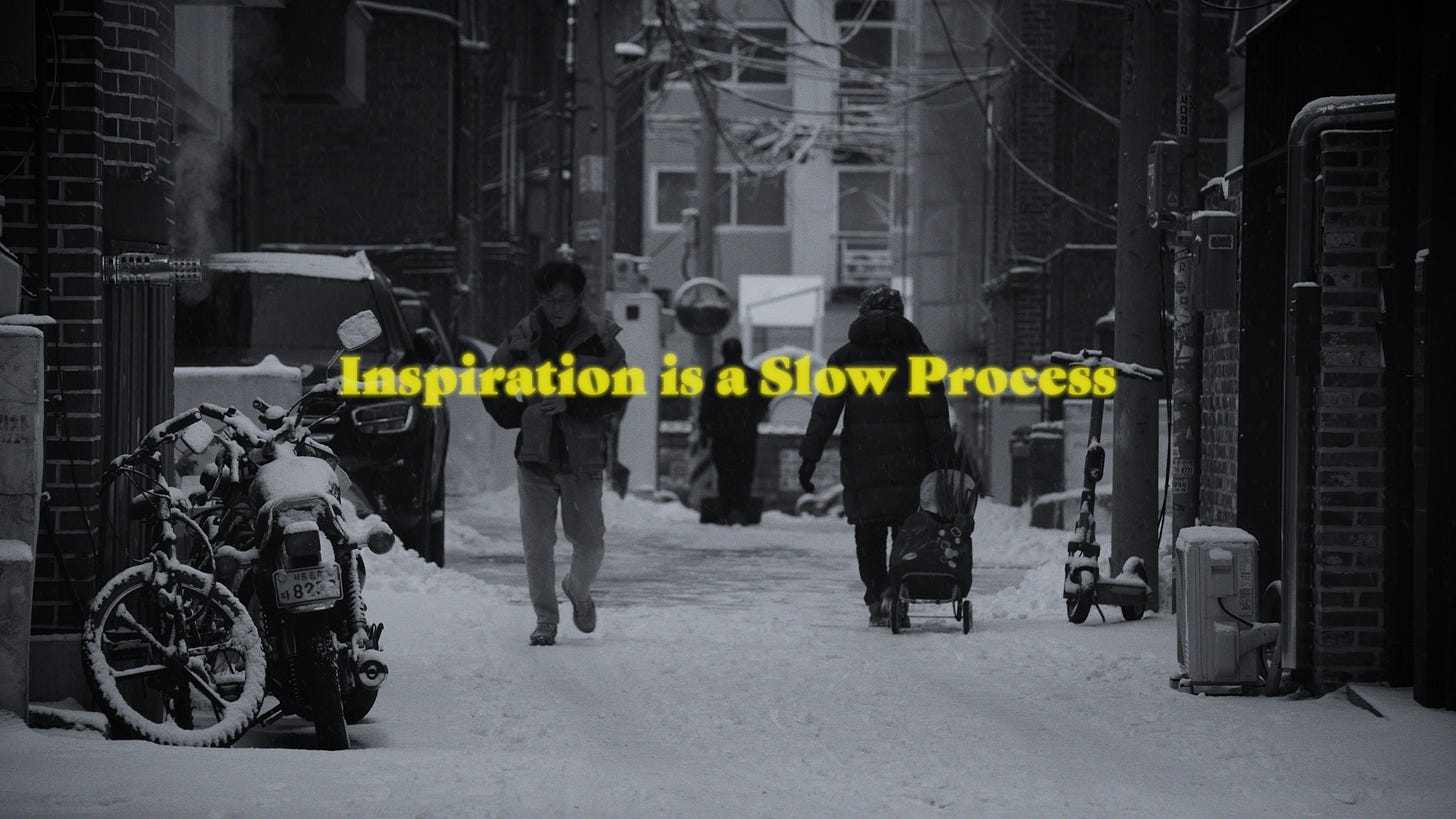

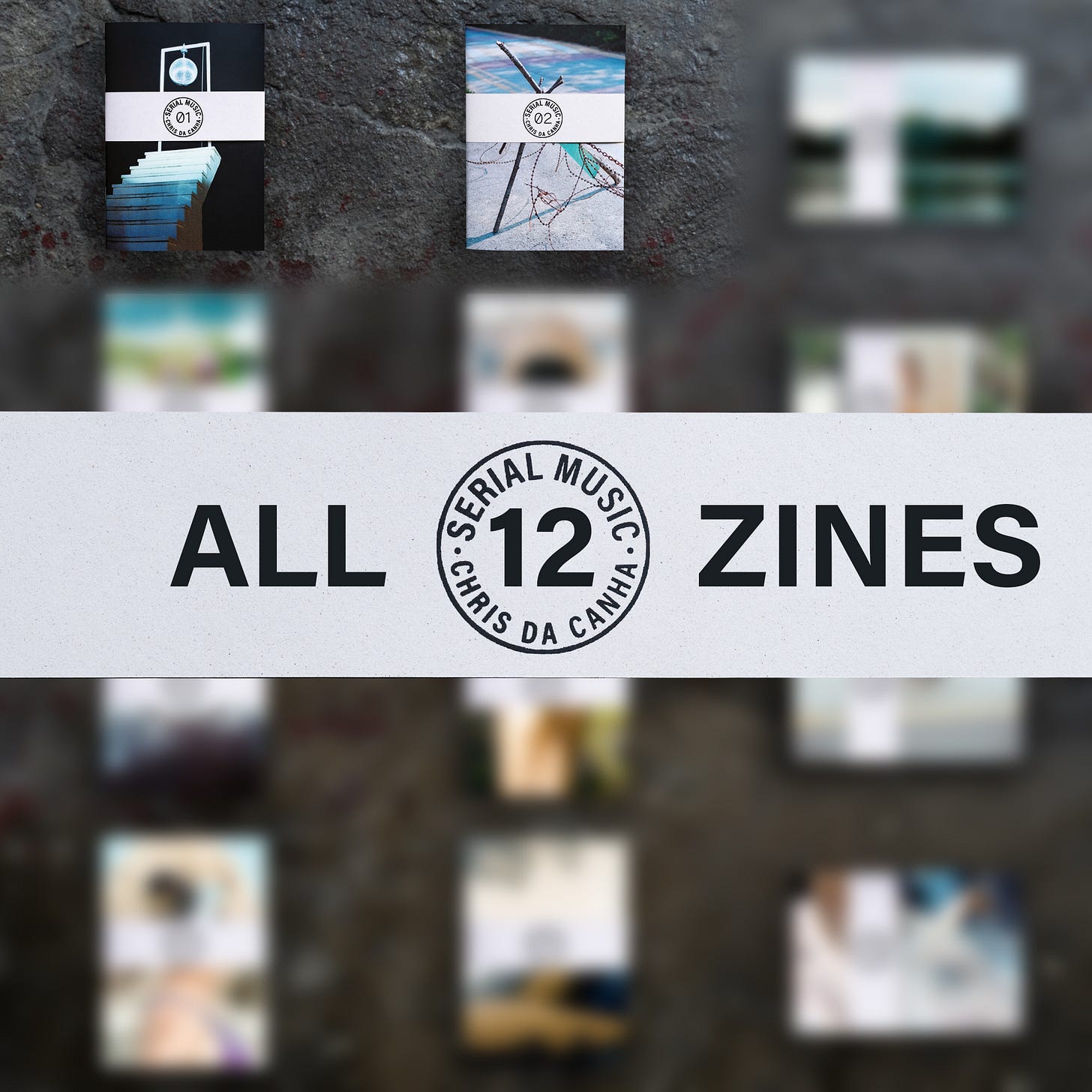
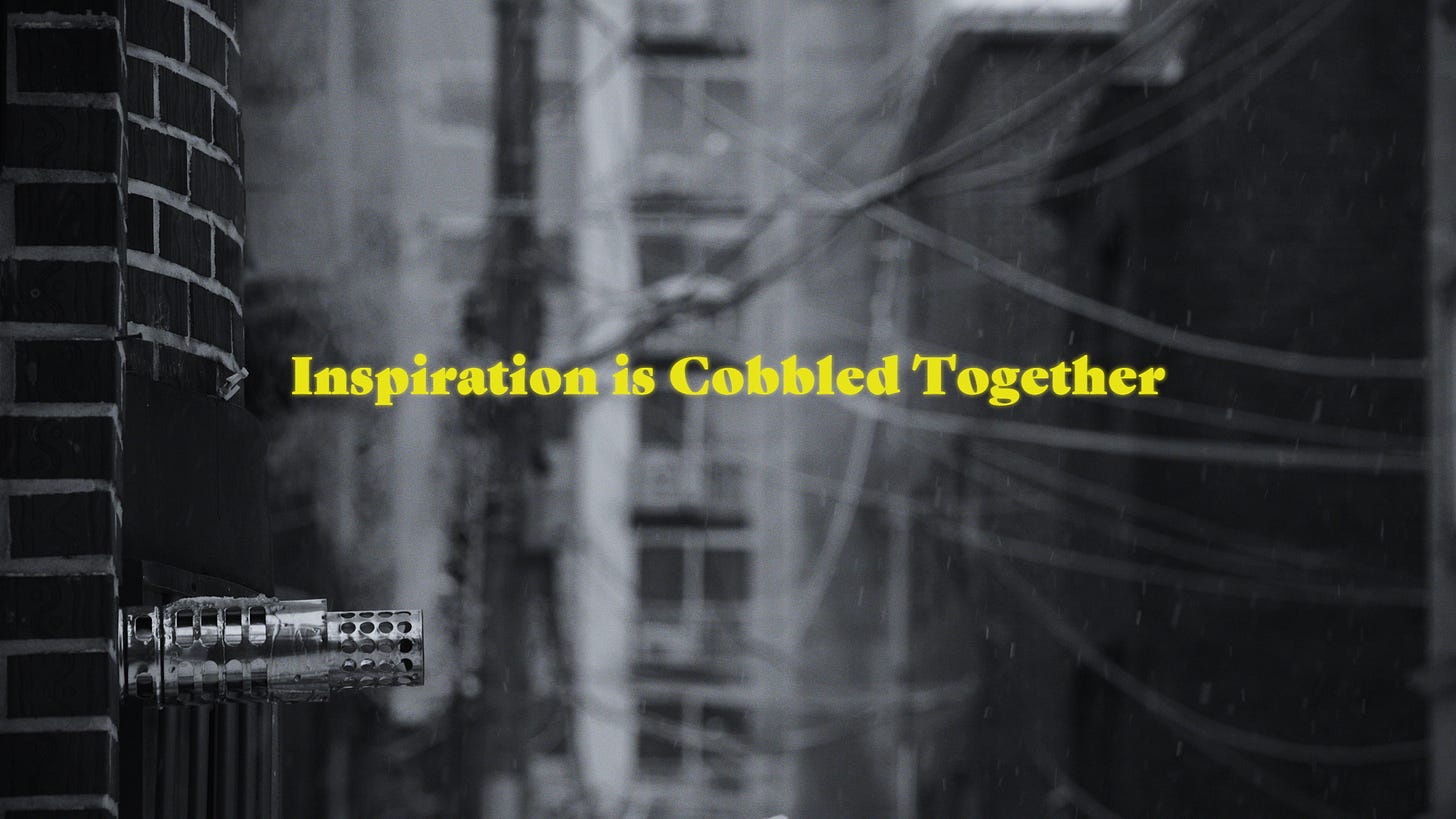

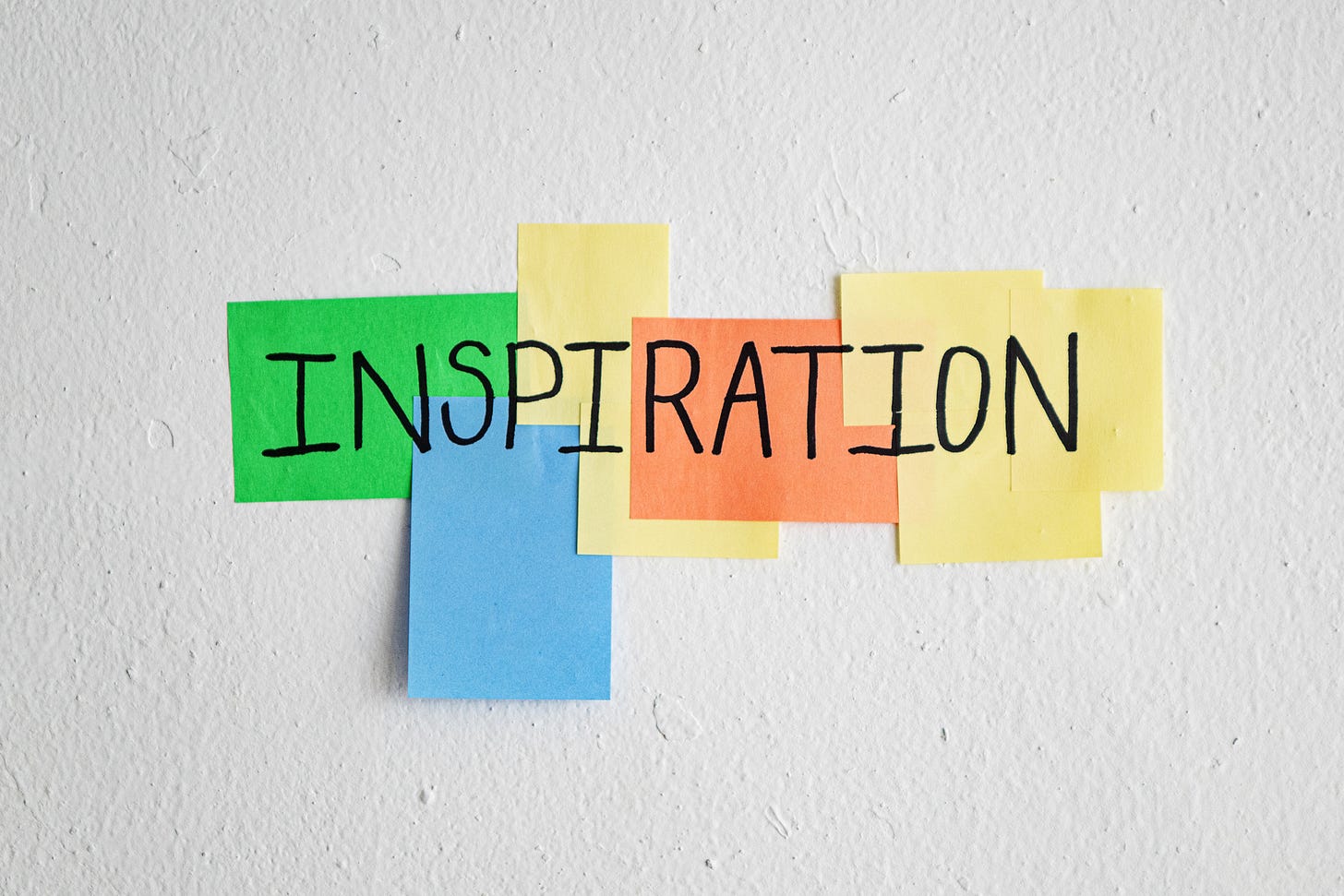

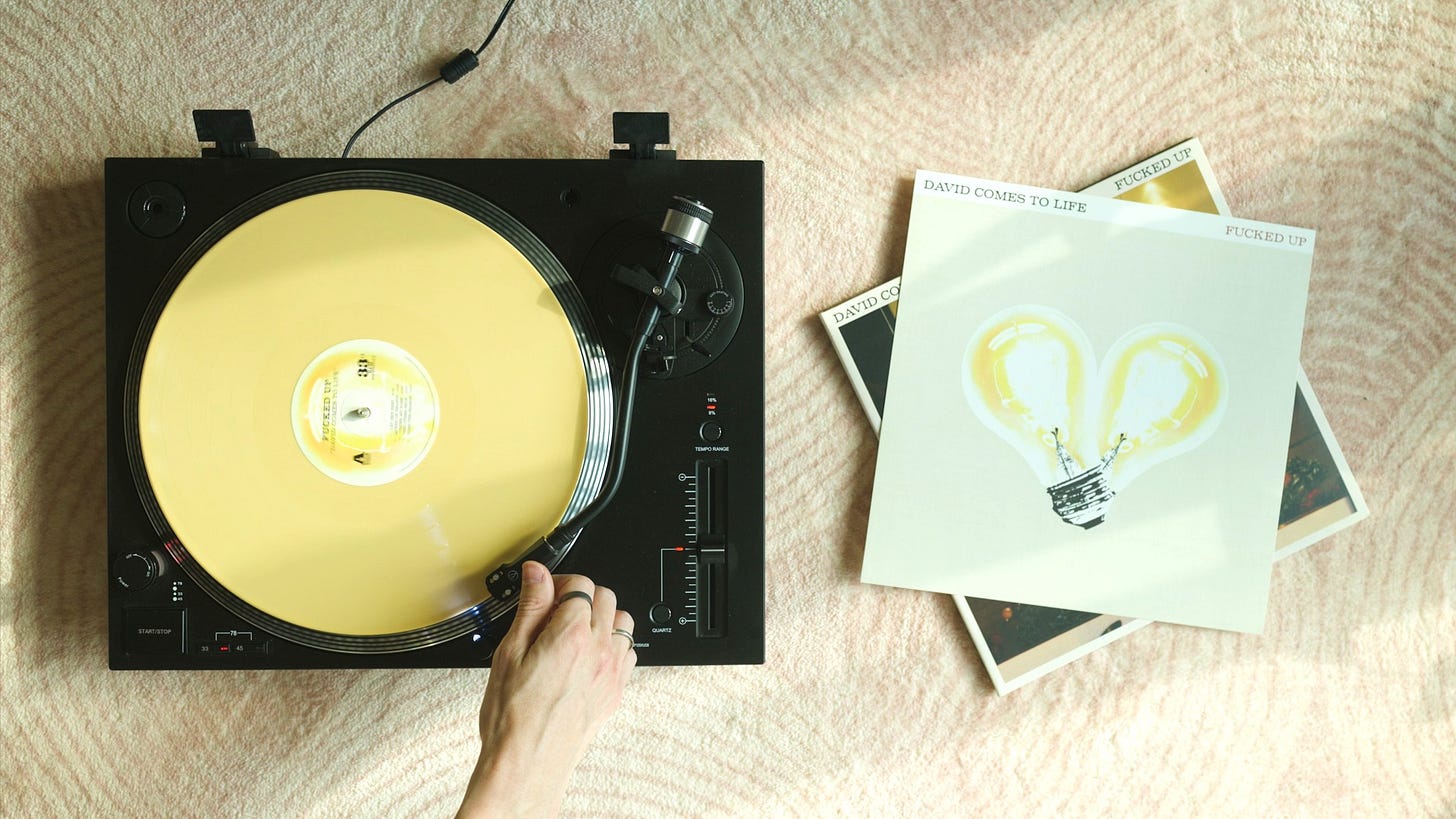

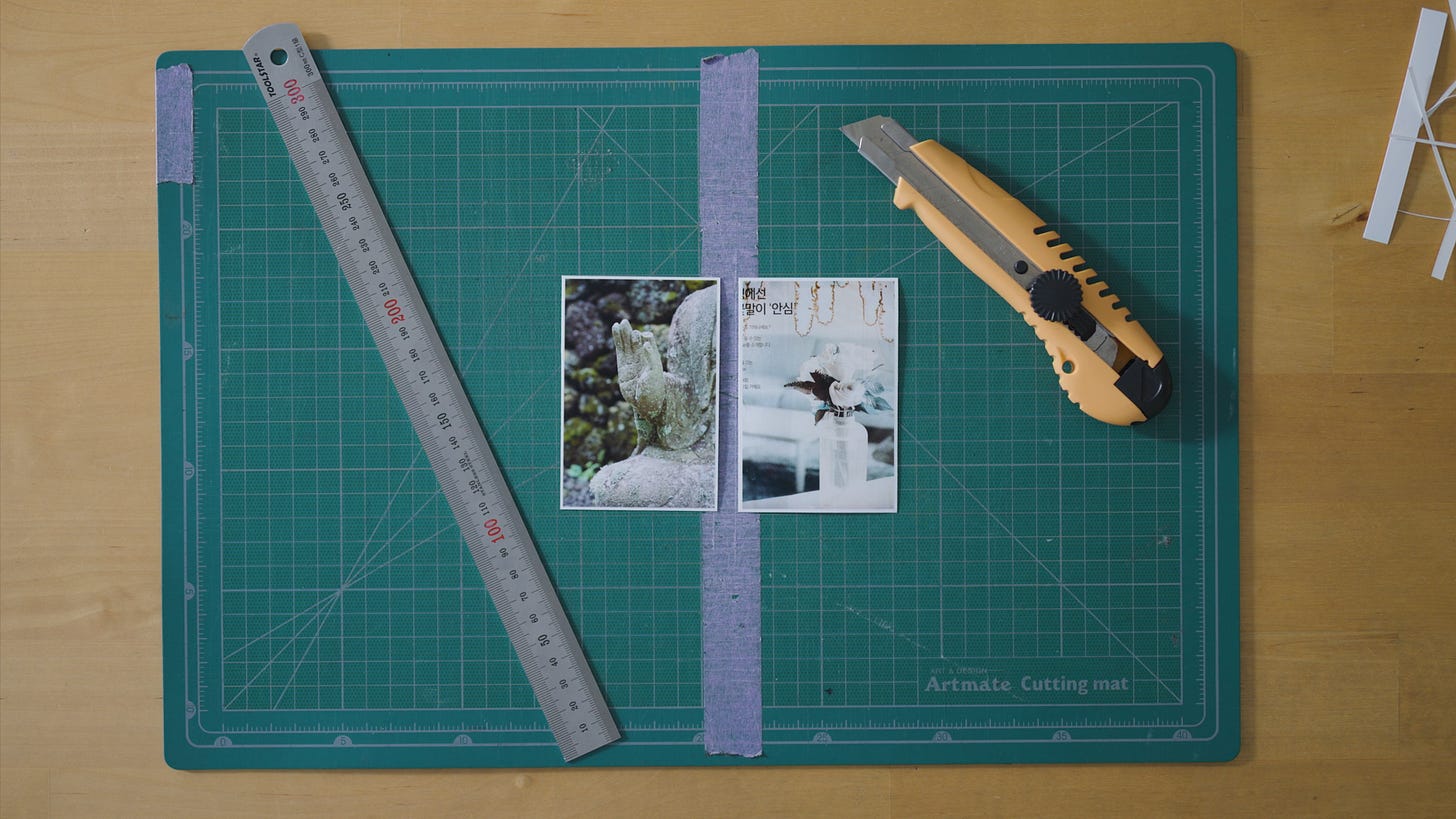
This is a great post! I restacked, and the intro message I included is this:
“This is how it works. If you are the kind of person who just sets a plan and expects to execute, it can be difficult to accept. Get over yourself, though, and you might be astonished at what emerges.”
I think this essay would be useful to an enormous number of artists. Well done, sir!
You make a very good point here, Chris, and it reminds me of something I learned in therapy, which is that even though breakthroughs feel like this bolt of lightning realization, you usually build up to them over time, brick by brick, until you reach that tipping point and finally see what was staring at you all along.